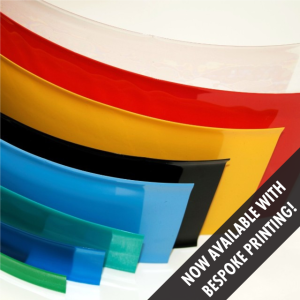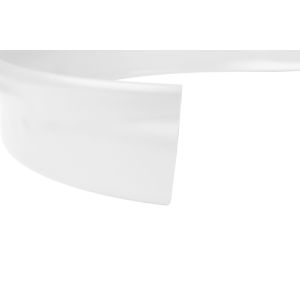Below is a guide to all the basic things you need to think about, and the terms you’ll need to understand, to get to grips with heat shrink tubing. Reading this article will give you a clearer idea of what kind of tubing you need for a particular use before you buy.
Sizing
Size matters when it comes to heat shrink tubing. You need to consider how wide the diameter will need to be, for the sleeve to slide over, and also the smallest diameter that the tubing needs to completely cover after shrinking.
If your application involves a perimeter that is not perfectly circular, you may need to perform an additional calculation to ensure the tubing fits snug.
You also need to think about the thickness of the sleeve wall and whether it can serve your purpose in terms of abrasion resistance or electrical requirements. For some purposes, you may have to consider longitudinal shrinkage as well.
Electrical Properties
If you are using your tubing to bundle wiring, or perhaps to insulate cable, you will need to choose an appropriate material and also be abreast of requirements around flame resistance and dielectric strength.
Many of these requirements will be contained in EU guidelines.
Operating Environment
Simply put, where is the tubing to be used?
Is it going to be used outdoors, exposed to the usual UV elements? Will it be buried in the ground and therefore in contact with damp soil? Is the tubing likely to be bent, or perhaps exposed to fluid or chemicals? Ticking these off will lead you towards the right tubing for the job.
Choosing Your Tubing
Once you have considered all of these variables in terms of utility and exposure to elements, you can move on to choosing the best heat shrink tubing for the job. Again, your best bet is to discuss this with an expert from Hilltop, as you will need to choose between polyolefin - the most popular material - or perhaps PVC, which can often prove cheaper.
Polyolefin’s strength is the cross-linking of polymer chains so that it can stand very high temperatures, up to 135°C. PVC can’t withstand temperatures that high, but it can cost as much as half as much as polyolefin.
Clear PVC is flame retardant, much tougher than polyolefin, and also tends to be available in brighter colours than polyolefin, which might well help with identification, so if your cabling is operating at lower temperatures, PVC cabling could work and prove more affordable.
Adhesive-Lined (or ‘dual wall’) Heat Shrink Tubing is another option. Dual wall tubing features an inner liner that melts when the tubing shrinks and therefore fits into spaces forming a seal that protects the tubing from damp.
Further, there are other more bespoke heat shrink tubing products available from Hilltop. Including polyvinylidene fluoride (PVDF), fluoropolymers (PTFE/FEP/PFA), elastomeric polyolefin, chlorinated polyolefin and fluoroelastomers, these tend to be more expensive, but might well be needed if the tubing needs to withstand particularly high temperatures, or is likely to be exposed to chemicals.
Use Of Heat Shrink Tubing
Presuming you’ve made your choice and we have the right heat shrink tubing for the job, you can move on to actually using your tubing.
Firstly, if you are storing your tubing, polyolefin is durable and won’t deteriorate but for PVC tubing, you need to store it at temperatures less than 30°C, and out of direct sunlight.
In terms of actually shrinking the tubing onto the components, for smaller pieces you can use a hand-held heat gun. For larger tubes, the best method is to use a flow-through oven to evenly heat the tubing – for PVC tubing at around 150°C for three minutes and 150°C for three minutes for polyolefin.
If you need heat shrink tubing, this guide will hopefully answer some of your questions. For more information please check our Buying Guide. If you have any further questions, however, please get in touch with us here at Hilltop, and we will be happy to advise further.
To speak to a member of the team call 01942 723 101







